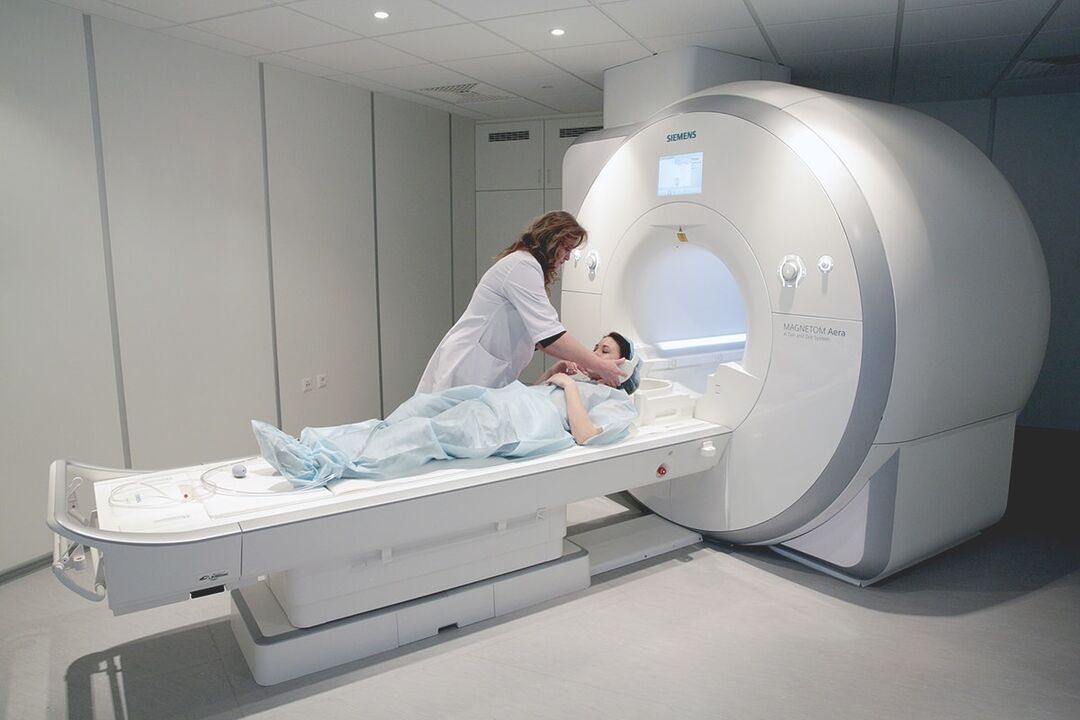The disease chameleon is often referred to as thoracic osteochondrosis. It is difficult to diagnose and is often confused with other diseases. At the same time, osteochondrosis rarely occurs in the thoracic spine and is a disease of the intervertebral disc.
How does disease occur?

Osteochondrosis affecting the thoracic spine is often disguised as a lesion of the internal organs. It manifests as heart pain, shortness of breath, feeling a lack of air when inhaling, and panic attacks. Therefore, the diagnosis of thoracic vertebral osteochondrosis is somewhat difficult.
The disc in each segment of the spine consists of a nucleus pulposus and a stronger annulus fibrosus. The latter protects the semi-liquid core and prevents it from being injured.
However, for some reason, in some cases, the metabolic process slows down, resulting in increased disc pressure. In this case, the disk is deformed and its structure is disturbed.
If treatment is not started at this stage, symptoms can become more pronounced. The annulus may rupture and the nucleus dry out.
The disease causes damage to the spinal nerves and destruction of the joints.
cause of disease
Osteochondrosis of the thoracic spine can occur for a variety of reasons, the most common of which are:
- chest trauma;
- Inactive, sedentary work (for those who work in front of a computer or drive);
- Scoliosis.
Also, problems with the chest area are related to its structure. In this area of the spine, the discs are much more crowded than in the lower back or cervical area. There is less movement in the chest area due to the presence of the ribs and the muscular corset.
The main cause of spinal and thoracic osteochondrosis is osteochondrosis in other departments.
What are the dangers of osteochondrosis?
If treatment is delayed despite symptoms, thoracic osteochondrosis can lead to a number of complications and problems, including:
- Intercostal neurology - when the intercostal nerves are compressed;
- spinal cord compression;
- shortness of breath, heart problems;
- Intestinal, liver and kidney function problems;
- bowel problems;
- hernia.
Which diseases are confused with osteochondrosis?
As mentioned above, the symptoms of osteochondrosis do not always quickly establish a diagnosis. Here's why osteochondrosis in the chest can be mistaken for:
- breast lesions;
- Digestive system diseases;
- Pneumonia (two diseases can be distinguished by dry cough, shortness of breath and fever with pneumonia. In the case of osteochondrosis, this symptom is not observed);
- heart attack (in this case, osteochondrosis can be distinguished by electrocardiogram);
- Renal colic.
symptom
For osteochondrosis in the thoracic region, symptoms of radiculopathy, which are associated with compression of nerve trunks and herniation between the vertebrae, are most often present. In this case, severe pain manifests itself after physical exertion, training. Symptoms may become more pronounced over the next few weeks, depending on the location of the hernia. If it is in the upper half, the liver, heart, and stomach suffer. If it is lower, the problem is kidney related.

The location of the hernia also has a significant effect on symptoms. So, if it's near the middle, the pain gets stronger and lasts for weeks and doesn't get better after taking the medicine. Lateral hernias present with periodic and mild pain, and local loss of sensitivity is possible.
Thoracic osteochondrosis with spinal cord compression has the following symptoms:
- intense pain;
- numbness of the limbs;
- pain radiating to the stomach, groin, legs;
- Pelvic organ dysfunction.
In addition to the above, osteochondrosis may present with other symptoms, especially:
- Numbness in individual skin areas;
- "goose bumps" on the thoracic spine;
- brittle nails;
- dry, peeling skin;
- Gastrointestinal disorders (diarrhea or conversely constipation);
- sore throat;
- Itching or cold feeling in the lower extremities.
Dorsago is the result of osteochondrosis of the thoracic spine
Thoracic vertebral osteochondrosis is characterized by the presence of dorsal bones. This is one of its main symptoms. In fact, the word "back pain" should be understood as a sharp and sudden pain in the chest. It's often called "shooting" because the condition feels the same as a stab wound. Severe episodes of backstab make it difficult to breathe and move freely. This occurs after prolonged physical exertion in people who already have osteochondrosis and joint disease.
Mild but growing pain in the chest area is called back pain. Symptoms are more pronounced when a person bends over. Pain is also exacerbated at night, especially in women with osteochondrosis who wear high heels.
diagnosis
For thoracic vertebral osteochondrosis, effective treatment is necessary. Symptoms without it only exacerbate and interfere with normal life.

After symptoms are identified, doctors direct patients to additional tests. Among the diagnostic methods most commonly used for thoracic osteochondrosis are:
- nuclear magnetic resonance. The tomography scanner can obtain clear three-dimensional images and compare them with the area of the body being studied. Therefore, the doctor can see the condition of the thoracic spine and assess the health of the joints. The procedure does not take much time (from 20 to 55 minutes) and is painless. The patient needs to expose the thoracic spine and lie down on a special sofa. A scanner placed on the person will now take pictures of these parts.
- Ultrasound program. Before proceeding with treatment, it is necessary to ensure that the osteochondrosis in the thoracic region is not accompanied by a tumor. For this purpose, ultrasonic methods are suitable. The device clearly shows the condition of soft tissues, joints, and intervertebral discs. As in the first case, the procedure does not take much time and is painless. With the help of an ultrasound examination, it is possible to examine the breasts of pregnant women and even children.
Of course, doctors will not provide treatment until the patient has passed general clinical blood and urine tests, and until the EKG results are obtained. The latter enables doctors with similar symptoms to distinguish thoracic osteochondrosis from a heart attack or other heart problems.
treat
Referring to a neuropathologist, patients with thoracic osteochondrosis will receive the recommended course of treatment. The methods and drugs, and when they are used, are determined by the doctor in each case. Typically, when osteochondrosis is detected in the chest, doctors recommend:
- Medication - the goal of which is to relieve pain, muscle spasms, reduce inflammatory processes, restore tissue around joints and vertebrae;
- Physiotherapy - aims to use ultrasound, electrical current or lasers to relieve severe pain in the chest and reduce the negative effects of osteochondrosis, to provide treatment for the joints;
- Manual treatment - thanks to the massage action of the specialist, the position of the thoracic disc can be aligned and spasm is relieved;
- Isometric Exercise Therapy (Gymnastics Therapy) - Helps improve mobility in the chest area and relieve pain.
In addition to the above methods, leech therapy, millimeter wave therapy, bee therapy, magnetic therapy and other methods can also be used for the treatment of osteochondrosis.



















